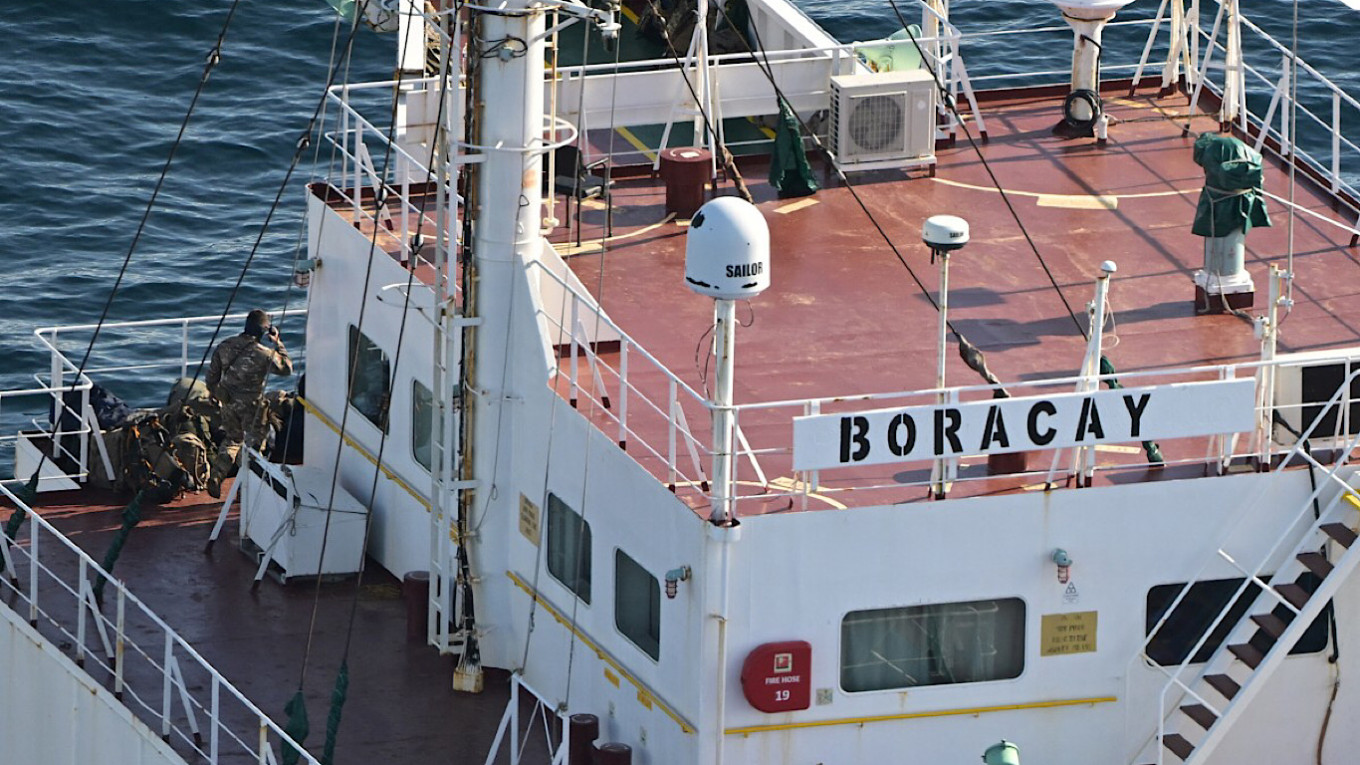A tanker associated with Russia’s “shadow fleet,” which was seized by the French navy, was en route to the Suez Canal on Friday, with its captain now back on the ship, as reported by maritime tracking sites and a source familiar with the situation.
The vessel, named Boracay, is blacklisted by the European Union due to its involvement in Russia’s evasion of sanctions with its fleet of outdated oil tankers. It has recently been connected to unexplained drone activities over Denmark from last month.
French authorities boarded the ship on Saturday, detaining both the captain and first mate. However, the tanker continued its journey on Thursday evening and was located off the western coast of France on Friday morning, according to information from Marine Traffic and Vesselfinder.
The ship’s Chinese captain, who was expected to appear in a French court in February for not complying with French naval orders, and the first mate have returned on board, as stated by a source who wished to remain anonymous.
“They were brought back to their vessel after being released from detention,” the confidential source told AFP.
French prosecutors announced on Thursday that the ship was halted due to discrepancies regarding its official registration while transporting a “substantial cargo of oil” from Russia to India, claiming to be registered under the flag of Benin.
This ship has also been associated with the recent mysterious drone flights over Denmark, which included military locations, amid a series of drone sightings and airspace infringements throughout Europe attributed to Russia, although Moscow denies any involvement.
Russian President Vladimir Putin criticized the French seizure of the vessel on Thursday, labeling it “piracy” and promising a “significant” reaction to what he described as threats from Europe.
Earlier, French President Emmanuel Macron had called on European nations to take stronger actions against Moscow’s attempts to bypass Western sanctions imposed following the 2022 invasion of Ukraine.
Macron emphasized the importance of dismantling the operational model that allows the use of aging, foreign-flagged tankers for transporting Russian oil by detaining these vessels.
These ships, which operate under flags of convenience, possess unclear ownership and frequently disable their transponders, enabling Moscow to continue exporting its crude oil for essential revenue despite export restrictions.
Some of these vessels are suspected of being involved in sabotage missions.
The tanker departed from the Russian port of Primorsk near St. Petersburg on September 20, according to shipping data.
Data from the Marine Traffic tracker indicates that the ship was meant to reach Vadinar in northwestern India by October 20.

